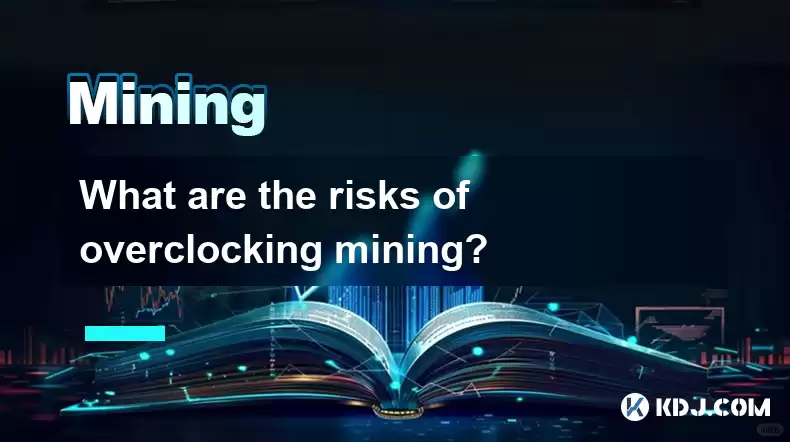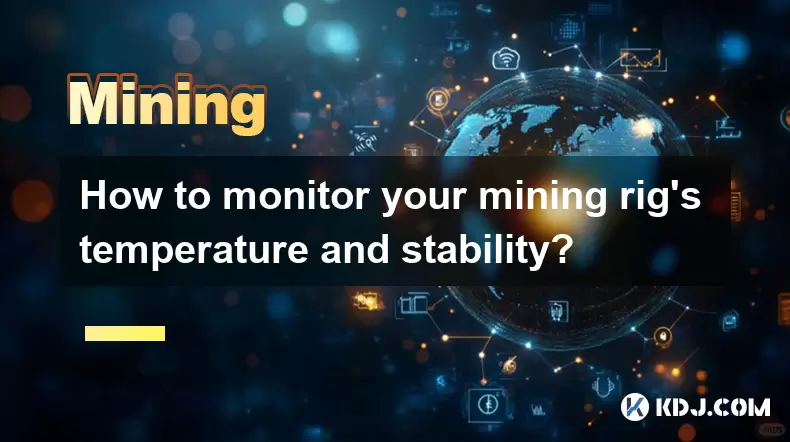-
 Bitcoin
Bitcoin $116800
0.20% -
 Ethereum
Ethereum $4192
5.51% -
 XRP
XRP $3.287
0.12% -
 Tether USDt
Tether USDt $1.000
0.00% -
 BNB
BNB $808.7
2.39% -
 Solana
Solana $180.4
2.23% -
 USDC
USDC $0.9999
0.01% -
 Dogecoin
Dogecoin $0.2390
6.80% -
 TRON
TRON $0.3365
-0.71% -
 Cardano
Cardano $0.8081
2.20% -
 Hyperliquid
Hyperliquid $43.74
6.50% -
 Chainlink
Chainlink $21.27
9.03% -
 Stellar
Stellar $0.4530
0.07% -
 Sui
Sui $3.908
3.00% -
 Bitcoin Cash
Bitcoin Cash $575.0
-1.02% -
 Hedera
Hedera $0.2632
0.61% -
 Avalanche
Avalanche $24.17
3.25% -
 Ethena USDe
Ethena USDe $1.001
0.02% -
 Litecoin
Litecoin $122.1
-0.24% -
 Toncoin
Toncoin $3.376
0.35% -
 UNUS SED LEO
UNUS SED LEO $8.981
-0.15% -
 Shiba Inu
Shiba Inu $0.00001373
5.86% -
 Uniswap
Uniswap $10.85
2.17% -
 Polkadot
Polkadot $4.080
4.03% -
 Dai
Dai $1.000
-0.02% -
 Pepe
Pepe $0.00001228
8.92% -
 Bitget Token
Bitget Token $4.506
0.09% -
 Cronos
Cronos $0.1581
3.76% -
 Monero
Monero $270.1
0.81% -
 Ethena
Ethena $0.7293
15.86%
What are the risks of overclocking mining?
Overclocking mining hardware can yield short-term rewards but carries risks such as hardware damage, diminished lifespan, insufficient cooling, increased power consumption, warranty issues, security risks, and disproportionate rewards.
Feb 19, 2025 at 07:06 pm

Key Points
- Understanding the Potential Risks of Overclocking Mining
- Hardware Damage
- Diminished Lifespan of Components
- Insufficient Cooling
- Increased Power Consumption
- Warranty Issues
- Security Risks
- Disproportionate Rewards
What are the Risks of Overclocking Mining?
Overclocking mining refers to the practice of running mining hardware beyond its specified operating parameters to enhance performance and increase crypto rewards. While this practice can yield short-term benefits, it also carries potential risks that miners need to be aware of.
Hardware Damage
Overclocking mining pushes hardware components, such as GPUs, beyond their recommended limits, increasing the likelihood of damage. The heightened voltage and temperatures can lead to degraded performance, reduced efficiency, and shortened lifespan.
Diminished Lifespan of Components
Prolonged overclocking stresses components, accelerating their wear and tear. This results in a reduced overall lifespan of the mining rig, requiring more frequent replacements and increasing operating costs.
Insufficient Cooling
Overclocking mining generates additional heat, which can overwhelm standard cooling systems. Inadequate cooling measures can lead to component overheating, causing irreversible damage and reducing system stability.
Increased Power Consumption
Overclocking increases hardware power consumption, drawing more energy from the grid. This can result in higher operating costs and environmental concerns for miners.
Warranty Issues
Overclocking mining typically violates manufacturer warranties, meaning that any damage incurred due to overclocking may not be covered. Miners should weigh the potential risks and rewards before engaging in this practice.
Security Risks
Overclocked mining rigs may experience stability issues or vulnerabilities that could expose them to malicious actors. Hackers could exploit these vulnerabilities to compromise the system or access sensitive data.
Disproportionate Rewards
While overclocking can yield marginal increases in performance, the benefits may not justify the risks involved. The potential gains in crypto rewards may not offset the increased expenses and potential hardware damage.
FAQs
Q: How can I minimize the risks of overclocking mining?
- Monitor temperatures: Regularly check component temperatures and ensure they remain within safe operating ranges.
- Use adequate cooling: Invest in a reliable cooling system that dissipates heat effectively.
- Gradually increase settings: Incrementally overclock the hardware, monitoring its performance and stability before pushing it further.
- Test stability: Run stress tests to evaluate the stability of the overclocked system before sustained mining.
Q: What are the signs of hardware damage due to overclocking?
- Reduced performance: Noticeable decrease in mining speed or efficiency.
- Overheating: Components running at excessively high temperatures.
- Artifacts or screen flickering: Visual distortions indicating GPU instability.
- System crashes: Frequent system shutdowns or blue screens of death.
Q: Are there alternatives to overclocking for improving mining performance?
- Selecting efficient hardware: Investing in hardware specifically designed for mining optimization.
- Optimizing cooling: Implementing efficient airflow and cooling solutions to maintain stable temperatures.
- Fine-tuning software: Calibrating software settings, such as pool algorithms and miner configurations.
Disclaimer:info@kdj.com
The information provided is not trading advice. kdj.com does not assume any responsibility for any investments made based on the information provided in this article. Cryptocurrencies are highly volatile and it is highly recommended that you invest with caution after thorough research!
If you believe that the content used on this website infringes your copyright, please contact us immediately (info@kdj.com) and we will delete it promptly.
- Crypto Airdrops & Opportunities: What's Hot in August 2025
- 2025-08-09 22:30:12
- XRP, Cardano, and the Alluring Alternatives: A 2025 Crypto Landscape
- 2025-08-09 22:35:12
- Shiba Inu (SHIB) in the Crypto Landscape: Community, Trends, and Future Outlook
- 2025-08-09 20:30:12
- Solana, Unilabs, and Social Trends: Decoding the Crypto Buzz
- 2025-08-09 21:10:12
- Dogecoin, Meme Coins, and Layer Brett: Chasing the Next 100x
- 2025-08-09 20:50:12
- Crypto Presales in 2025: Are They Set to Outperform Launches?
- 2025-08-09 20:55:15
Related knowledge

What is "proof-of-work" and how does it relate to mining?
Aug 07,2025 at 02:03pm
Understanding the Concept of Proof-of-WorkProof-of-work (PoW) is a consensus mechanism used in blockchain networks to validate transactions and secure...

What are the differences between mining on Windows vs. Linux?
Aug 06,2025 at 11:29pm
Overview of Cryptocurrency Mining PlatformsCryptocurrency mining involves using computational power to solve complex cryptographic puzzles and validat...

How to use an old computer for cryptocurrency mining?
Aug 07,2025 at 12:42pm
Understanding the Feasibility of Using an Old Computer for MiningUsing an old computer for cryptocurrency mining may seem outdated, but it is still te...

Can you mine cryptocurrency using solar power?
Aug 07,2025 at 12:00am
Understanding the Basics of Cryptocurrency MiningCryptocurrency mining involves validating transactions on a blockchain network by solving complex cry...

How to monitor your mining rig's temperature and stability?
Aug 09,2025 at 09:43am
Understanding the Importance of Temperature Monitoring in Mining RigsMaintaining optimal temperature levels in a mining rig is essential for long-term...

How to build a mining rig inside a PC case?
Aug 06,2025 at 11:01pm
Understanding the Basics of a Mining Rig in a PC CaseBuilding a mining rig inside a PC case involves transforming a standard computer chassis into a d...

What is "proof-of-work" and how does it relate to mining?
Aug 07,2025 at 02:03pm
Understanding the Concept of Proof-of-WorkProof-of-work (PoW) is a consensus mechanism used in blockchain networks to validate transactions and secure...

What are the differences between mining on Windows vs. Linux?
Aug 06,2025 at 11:29pm
Overview of Cryptocurrency Mining PlatformsCryptocurrency mining involves using computational power to solve complex cryptographic puzzles and validat...

How to use an old computer for cryptocurrency mining?
Aug 07,2025 at 12:42pm
Understanding the Feasibility of Using an Old Computer for MiningUsing an old computer for cryptocurrency mining may seem outdated, but it is still te...

Can you mine cryptocurrency using solar power?
Aug 07,2025 at 12:00am
Understanding the Basics of Cryptocurrency MiningCryptocurrency mining involves validating transactions on a blockchain network by solving complex cry...

How to monitor your mining rig's temperature and stability?
Aug 09,2025 at 09:43am
Understanding the Importance of Temperature Monitoring in Mining RigsMaintaining optimal temperature levels in a mining rig is essential for long-term...

How to build a mining rig inside a PC case?
Aug 06,2025 at 11:01pm
Understanding the Basics of a Mining Rig in a PC CaseBuilding a mining rig inside a PC case involves transforming a standard computer chassis into a d...
See all articles

























































































